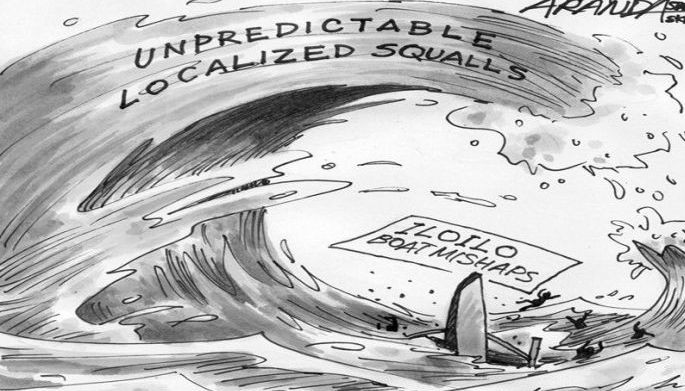Despite outriggers for stability while sailing, several inter-island bancas could not withstand a squall that hit the Iloilo-Guimaras Strait last Saturday. The strong waves overturned three of the wood-hulled bancas, sending many of the passengers and crew to their deaths.
As of yesterday afternoon, the confirmed death toll stood at 28, with six still missing. At least 19 passengers were reportedly not listed in what passes for a ship manifest in banca operations. Passengers and boat operators alike appear to ignore the requirement, but this should not deter the government from tightening regulation of such boats. Across the country, outriggers are the maritime equivalent of jeepneys – hop-on, hop-off mom-and-pop operations that people take at their own risk, loosely regulated at best.
Another requirement that was ignored was the use of life vests, with only a few passengers reportedly wearing them. Malacañang has also called for improved warning systems on weather conditions for sailing. The Philippine Coast Guard said that after the first two boats capsized, the weather improved and there was no gale warning so a third boat was cleared to sail.
The disaster highlighted a need for sturdier boats for inter-island transportation. Motorized outriggers are ubiquitous across the archipelago, often providing the only affordable mode of inter-island transportation. Several are owned and operated by the boatmen themselves, who cannot afford sturdier but more expensive versions. There are sleek and safer motorized fiberglass boats, but these are beyond the reach of marginalized boat operators.
The government can provide credit access to such operators, or else help organize them into cooperatives that can pool resources to modernize their boats. The accident last Saturday is hardly the first involving light outriggers. And there will be many others, because people will continue taking such boats despite the known risks, for lack of safer and affordable alternatives.


